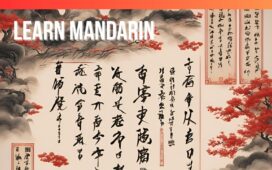Agile Methodology & its Importance
“Success is no longer about changing strategies more often, but having the agility to execute multiple strategies concurrently and success requires CEOs to develop the right leadership capabilities, workforce skills, and corporate cultures to support digital transformation”, said Pierre Nanterme, a French business executive, former chairman and chief executive officer of Accenture.
Agile Methodologies
The business world is changing rapidly and companies are adopting numerous strategies to keep up with the changing trends and competing rivals. To tackle such a rapid change and to keep pace with the growing demands of the customers. Agile Methodology is an integration of multiple skills into one single team. It is a method for dealing with a venture by separating it into a few stages. It includes steady joint effort with partners and ceaseless improvement at each stage. When the work starts, groups cycle through a course of arranging, executing and assessing processes further achieving the goal more quickly and efficiently.
Agile Methodologies have conquered the customary strategies for the cascade model by becoming adaptable, quick, lean, responsive, and predictable. The agile technique centres around individuals and is more correspondence situated. Agile techniques are tried in a unique climate and end up being entirely adaptable by adjusting to the change occurring in the business. Agile techniques remember customary examination for a restrained way, which thusly further develops the initiative characteristics to help the cooperation. The agile technique follows best practices that assist in getting great programming rapidly.
Role of Human Resources in this Revolutionary Change
Due to the fast-changing world, HR departments around the world find the need to adapt and be more flexible (in other words be more agile) to keep up with customer demands and the competition. Every responsibility carried out by the human resource department would undergo a digital change which will eventually change the end goal of each of the operations.
Adopting an Agile HR approach can be done through the following 5-step approach.
1) Identify the bottlenecks in the processes which are consuming the maximum amount of time or processes which are repeating.
2) Decide the resources required to eliminate these bottlenecks, form a team and define the roles and responsibilities of each member in the team.
3) Define the goals needed to be achieved and map out the time required to complete each individual task and eventually the entire project.
4) Prioritize the tasks and line them up based on their importance and process flow. Hold frequent stand up meetings to assess the progress and make changes to the approach if necessary.
5) Take feedback and solve the problems in the approach for the next project.
Hybrid Working
The coronavirus pandemic has changed the way we look at businesses and has forced organizations to think in ways they never would have thought if not for the pandemic. Companies have moved completely to work from home during the pandemic and have to adapt to a hybrid working model (with employees working both on the floor and off it) in the recent past. This kind of working model has impacted the hiring and onboarding of multiple organizations. Companies have moved towards training teams to be agile by equipping the team with cross-functional skilled personnel and this meant that hiring also should happen in such a way that every team was self-sufficient and would not need any external assistance. HR professionals would also need to keep up with the fast-changing working techniques as a result of the automation which would result in clear changes in hiring requirements and parameters. Automation and remote working go hand in hand as the more of the process is automated, more of it can be monitored remotely and this is a fundamental shift in the skills required which would act as a huge parameter for hiring.
Onboarding & Training
As the agile methodology is implemented more and more, the training models would also have to be updated and redefined according to the requirements of the particular department. After rolling out Kubernetes, an open-source container orchestration platform, training and onboarding was the most challenging part for companies to teach this skill to their existing employees and to hire and onboard new employees for this skill.
To guarantee training focuses on the right abilities, L&D can exploit accessible information and make minor acclimations to its examination cycles to use nimble documentation, take part in the run services or join the group, and draw in with well-informed authorities (SMEs) in an unexpected way. Regardless of whether they are broadly educating to comprehend various jobs or moving into new positions, representatives can get ready for extra liabilities through preparing and improving openings. Preparing and advancement projects can assist workers with mastering the abilities they need in their present jobs and present administration abilities and programming information they will require later on. One type of preparation, apprenticeship, permits workers to begin as students and progress to a more elevated level job.
Organizational Culture
Human Resource departments around the world should structure themselves to respond faster and adapt to situations more speedily and flexibly. Due to the automation and the working cultures these days, employees are unable to maintain the personal rapport they used to maintain back when on-floor working was popular. Due to automation, remote working and a hybrid model of working style grew in popularity and employees are managing teams and overseeing processes remotely which is hugely impacting the organizational culture and could also affect the loyalty generated amongst the employees towards the organization. How loyal the employees are in tough times would determine the hiring frequency and training requirements of the organization. Due to the hybrid working style, the employees working remotely have a feeling of being an outsider which happens automatically and that creates a divide between the employees working on the floor and off it. This greatly impacts the organizational culture further casting more burden on the HR department to change their approach toward culture and organizational values.
Rewards & Appraisal System
The rewarding system defines the kind of performance expectations from the employees and this should be designed according to the culture that is being promoted. It is the role of the human resource department to ensure the employees perform at par with the future and upcoming trends and this can be done through intrinsic and extrinsic motivational techniques. One of these techniques is the rewarding and appraisal system.
The HR department is one of the most significant departments of an organization and changing along with the upcoming course of the industry is of utmost importance for the success of the entire organisation.










